'Exceptional' Roman gold coin hoard found near Norwich
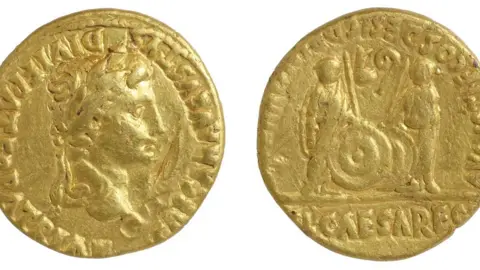 Adrian Marsden
Adrian MarsdenA hoard of Roman gold coins hidden in the decades before the Roman invasion of Britain has been discovered.
Eleven coins have been found so far, scattered near Norwich in Iceni tribe territory. Their queen Boudica would later rebel against Roman rule.
Numismatist Adrian Marsden said the hoard is "really quite exceptional" and more coins might be unearthed.
An inquest at Norfolk Coroner's Court into the two latest finds deemed them treasure.
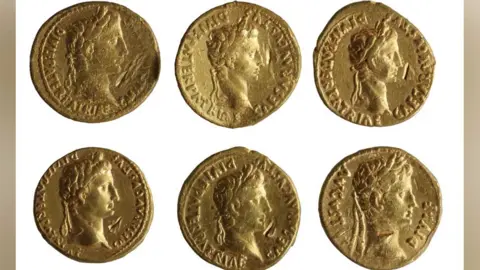 Adrian Marsden
Adrian MarsdenThe first coins were found by two metal detectorists in 2017 and they have been uncovering more ever since.
Mr Marsden, from the Norfolk Historic Environment Service, said: "In the last two or three years, they've said, 'There won't be any more,' and I've said, 'There will be,' and sure enough they pull another one out.
"Hoards get dispersed by tractors and ploughs or planting, so coins get moved about fields and can travel quite some distances."
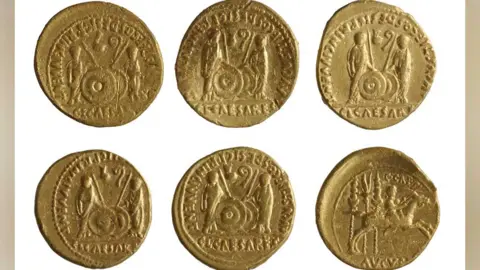 Adrian Marsden
Adrian Marsden
Metal detecting and the law
- No search can begin until permission has been given by the landowner
- All finds belong to the landowner
- Any find in England, Wales and Northern Ireland that is more than 300 years old, made of gold or silver, or found with gold or silver artefacts, could be treasure under the 1996 Treasure Act
- These must be reported to the appropriate county finds liaison officer
Source: Portable Antiquities Scheme

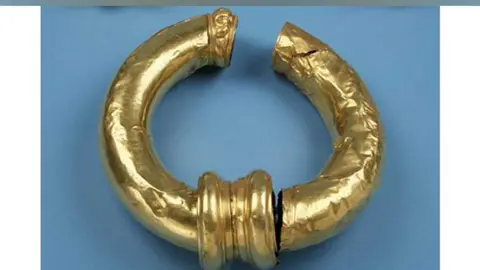 Norfolk Museums and Archaeology Service
Norfolk Museums and Archaeology ServiceThey were struck at Lugdunum, now Lyon, in France, between the last years of the 1st Century BC and the first years of the 1st Century AD - a generation before the Roman invasion in AD43.
They are hardly worn and each has a tiny peck mark by the emperor Augustus' head, which Mr Marsden believes was done by Iceni craftsmen to check their quality.
"These are really high purity gold, whereas the Iron Age gold coins circulating at that time is quite debased - they knew good Roman gold when they saw it," he said.
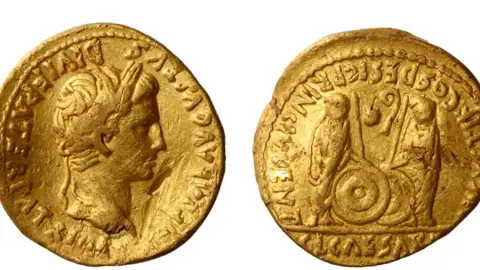 Adrian Marsden
Adrian MarsdenMr Marsden believes an Iceni goldsmith might have intended to use them to create gold torcs, similar to the ones found at Ken Hill at Snettisham between 1948 and 1990.
He said: "To have a hoard where the coins in it are all from or before the Roman invasion - and we have good cause to believe they are going into the ground before the Roman invasion - is really quite exceptional."
The British Museum has acquired the first nine coins and is expected to acquire the latest finds.

Find BBC News: East of England on Facebook, Instagram and Twitter. If you have a story suggestion email [email protected]
